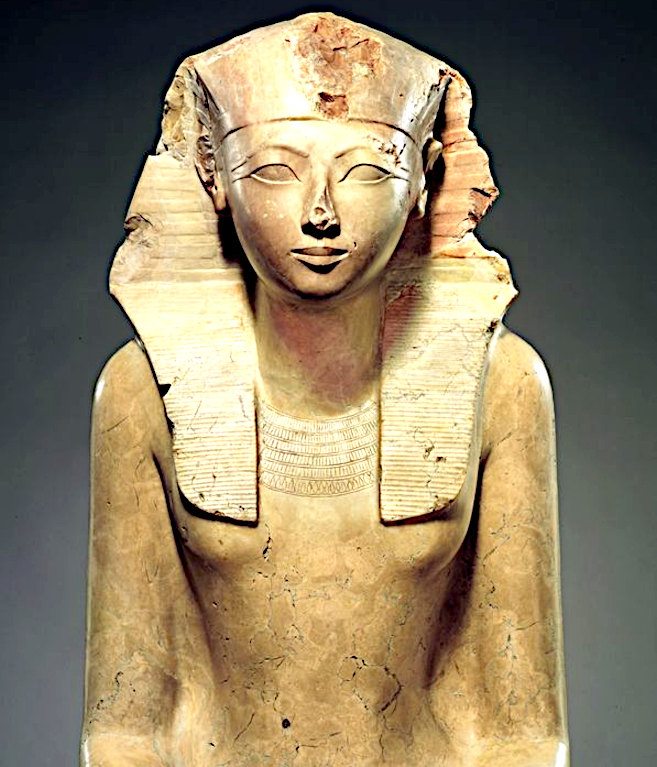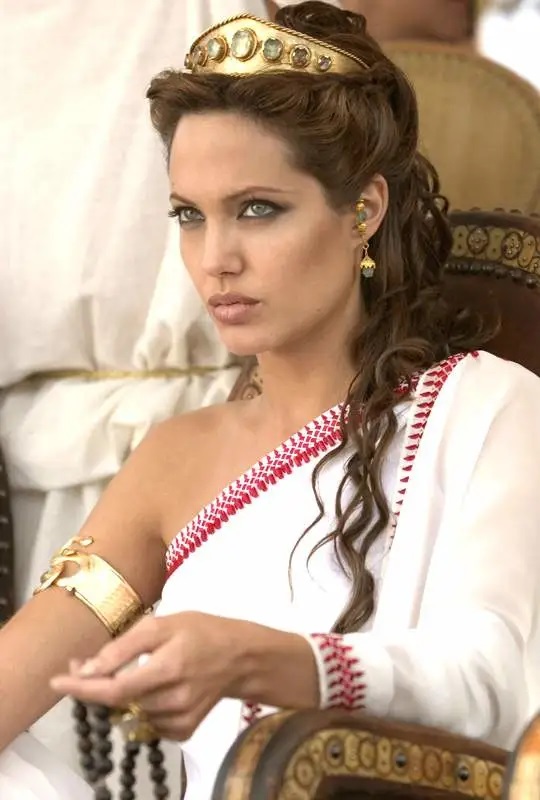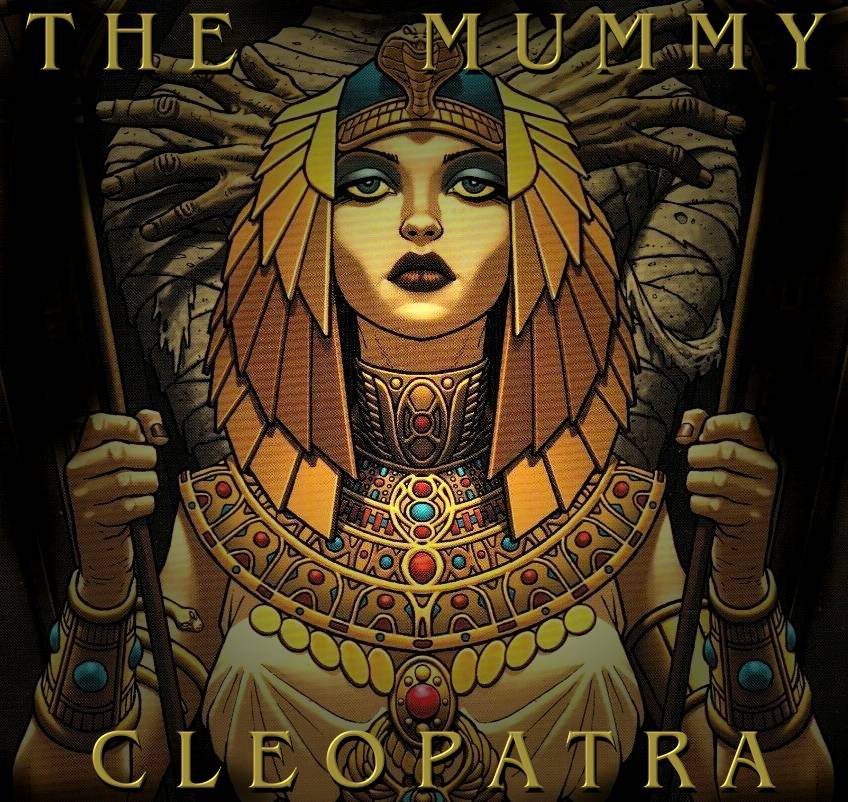
Statue
of Hapshepsut
Hatshepsut (or Hatchepsut "Foremost of Noble Ladies") was the fifth pharaoh of the Eighteenth Dynasty of Egypt c. 1507–1458 BC. She was the second historically confirmed female pharaoh, after Sobekneferu. (Various other women may have also ruled as pharaohs or at least regents before Hatshepsut, as early as Neithhotep around 1,600 years prior.)
Hatshepsut came to the throne of Egypt in 1478 BC. As the principal wife of Thutmose II, Hatshepsut initially ruled as regent to Thutmose III, a son of Thutmose II by another wife and the first male heir. While Thutmose III had inherited the throne at about two years old, Hatshepsut continued to rule by asserting her lineage as the daughter and only child of Thutmose I and his primary wife, Ahmose.
Her husband Thutmose II was the son of Thutmose I and a secondary wife named Mutnofret, who carried the title 'King's daughter' and was probably a child of Ahmose I. Hatshepsut and Thutmose II had a daughter named Neferure. Thutmose II with Iset, a secondary wife, would father Thutmose III, who would succeed Hatshepsut as pharaoh.
BURIAL & MUMMIFICATION
Hatshepsut died in her twenty-second regnal year as she approached what we would consider middle age given typical contemporary lifespans. The precise date of Hatshepsut's death
- nd when Thutmose III became the next pharaoh of Egypt - is considered Year 22, II Peret day 10 of her reign, as recorded on a single stela erected at Armant or 16 January 1458 BC. This information validates the basic reliability of Manetho's king list records since Hatshepsut's known accession date was I Shemu day 4 (i.e., Hatshepsut died nine months into her 22nd year as king, as Manetho writes in his Epitome for a reign of 21 years and nine months). No contemporary mention of the cause of her death has survived.
Hatshepsut had begun constructing a tomb when she was the Great Royal Wife of Thutmose II. Still, the scale of this was not suitable for a pharaoh, so when she ascended the throne, preparation for another burial started. For this, KV20, originally quarried for her father, Thutmose I, and probably the first royal tomb in the Valley of the Kings, was extended with a new burial chamber. Hatshepsut also refurbished her father's burial and prepared for a double interment of both Thutmose I and her within KV20. Therefore, it is likely that when she died (no later than the twenty-second year of her reign), she was interred in this tomb along with her father.
During the reign of Thutmose III, however, a new tomb (KV38), together with new burial equipment, was provided for Thutmose I, who then was removed from his original tomb and re-interred elsewhere. At the same time, Hatshepsut's mummy might have been moved into the tomb of her nurse, Sitre In, in KV60. It is possible that Amenhotep II, son to Thutmose III by a secondary wife, was the one motivating these actions in an attempt to assure his own uncertain right to succession. Besides what was recovered from KV20 during Howard Carter's clearance of the tomb in 1903, other funerary furniture belonging to Hatshepsut has been found elsewhere, including a lioness "throne" (bedstead is a better description), a senet game board with carved lioness-headed, red-jasper game pieces bearing her pharaonic title, a signet ring, and a partial shabti figurine bearing her name. In the Royal Mummy Cache at DB320, a wooden canopic box with an ivory knob was found that was inscribed with the name of Hatshepsut and contained a mummified liver or spleen as well as a molar tooth. There was a royal lady of the twenty-first dynasty of the same name, however, and for a while, it was thought possible that it could have belonged to her instead.
POSSIBLE MUMMY FIND
In 1903, Howard Carter had discovered tomb KV60 in the Valley of the Kings. It contained two female mummies: one identified as Hatshepsut's wetnurse and the other unidentified. In spring 2007, the unidentified body, called KV60A, was finally removed from the tomb by Dr.
Zahi Hawass and brought to Cairo's Egyptian Museum for testing. This mummy was missing a tooth, and the space in the jaw perfectly matched Hatshepsut's existing molar, found in the DB320 "canopic box". Based on this, Hawass concluded at the time that the KV60A mummy could be Hatshepsut.
While the mummy and the tooth could be DNA tested to see if belonged to the same person and confirm the mummy's identity, Dr. Zahi Hawass, the Cairo Museum and some Egyptologists have refused to do it as it would require destroying the tooth to retrieve the DNA. Her death has since been attributed to a benzopyrene carcinogenic skin lotion found in possession of the Pharaoh, which led to her having bone cancer. Other members of the queen's family are thought to have suffered from inflammatory skin diseases that tend to be genetic. Assuming that the mummy is that of Hatshepsut, it is likely that she inadvertently poisoned herself while trying to soothe her itchy, irritated skin. It also would suggest that she had arthritis and bad teeth, which may be why the tooth was removed.
However, in 2011, the tooth was identified as the molar from a lower jaw, whereas the mummy from KV60 was missing a molar from its upper jaw, casting doubt on the former hypothesized identification.
ERASING HER NAME
The erasure of Hatshepsut's name—whatever the reason or the person ordering it—almost caused her to disappear from Egypt's archaeological and written records. When nineteenth-century Egyptologists started to interpret the texts on the Deir el-Bahri temple walls (which were illustrated with two seemingly male kings) their translations made no sense. Jean-François Champollion, the French decoder of hieroglyphs, was not alone in feeling confused by the obvious conflict between words and pictures:
If I felt somewhat surprised at seeing here, as elsewhere throughout the temple, the renowned Moeris [Thutmose III], adorned with all the insignia of royalty, giving place to this Amenenthe [Hatshepsut], for whose name we may search the royal lists in vain, still more astonished was I to find upon reading the inscriptions that wherever they referred to this bearded king in the usual dress of the Pharaohs, nouns and verbs were in the feminine, as though a queen were in question. I found the same peculiarity everywhere...
The "Hatshepsut Problem" was a major issue in late 19th century and early 20th century Egyptology, centering on confusion and disagreement on the order of succession of early 18th Dynasty pharaohs. The dilemma takes its name from confusion over the chronology of the rule of Queen Hatshepsut and Thutmose I, II, and III. In its day, the problem was controversial enough to cause academic feuds between leading Egyptologists and created perceptions about the early Thutmosid family that persisted well into the 20th century, the influence of which still can be found in more recent works. Chronology-wise, the Hatshepsut problem was largely cleared up in the late 20th century, as more information about her and her reign was uncovered.
The 2006 discovery of a foundation deposit including nine golden cartouches bearing the names of both Hatshepsut and Thutmose III in Karnak may shed additional light on the eventual attempt by Thutmose III and his son Amenhotep II to erase Hatshepsut from the historical record and the correct nature of their relationships and her role as pharaoh.
OTHER NOTABLE QUEENS
Nefertiti,
a beautiful ancient Egyptian queen, architect of the sun cult.
Sobekneferu
ruler for 3 years in Twelfth Dynasty
Cleopatra,
last queen of Egypt
Amina, queen for 34 years in Nigeria
Candace,
Ethiopian Empress, a fearsome fighter, who resisted Alexander the Great.
Semiramis,
female ruler Assyrian empire.
NOTABLE KINGS
Djoser
Khufu
Khafre
Ahmose
Amenhotp I
Thutmose I, II, III
Ramesses I, II III, VI, VIII, IX, X, XI
Amenhotep II
Akhenaten
Tutankamun
Seti I & II
Alexander the Great
Ptolemy I Soter I
Ptolemy IV Philopator
Ptolemy VI Philometor
Ptolemy IX Soter II

REFERENCE
https://www.stylist.co.uk/opinion/cleopatra-lady-gaga-angelina-jolie-whitewashing-elizabeth-taylor-debate-diversity-representation/245816

CLEOPATRA
THE MUMMY - UNDER DEVELOPMENT
'Cleopatra
- The Mummy' is the sequel to 'Kulo-Luna.'
Kulo-Luna was
the first of the John Storm franchise (for which a draft
script is available to studios and actor's agents). The John Storm
franchise is a series of
ocean awareness adventures, featuring the incredible solar
powered trimaran: Elizabeth
Swann.